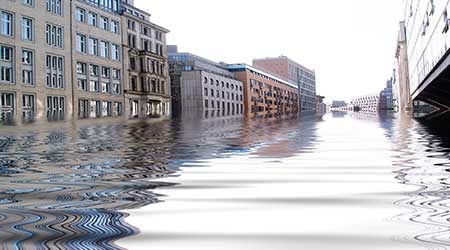|
Addressing building resilience in existing structures through prevention and mitigation efforts makes good business sense for several reasons. First is the obvious point that a resilient building will be able to remain operational or return quickly to normal functioning, which will allow business continuity. This creates a market advantage against neighboring facilities that were less prepared.
"Twenty five percent of all businesses that close their doors due to a natural disaster for more than 24 hours never reopen," says Julie Rochman, president and CEO of the Insurance Institute for Business & Home Safety. "That's bad for everybody, but there is a market advantage to being the hotel chain, the pharmacy, the hospital, the restaurant, or the grocery store that I can count on in case of disaster because they'll be there."
The other reason resilience makes good business sense is that it addresses exposure to risk in terms of getting sued. If an element of a facility breaks off in high winds or during an earthquake, that's a liability exposure. "With commercial structures, depending on when the event hits, you may have workers comp exposures, liability exposures, so this is something to take very seriously," says Rochman.
Addressing resilience in existing buildings requires facility managers to make a leap and embrace planning for an event for which is there is a high degree of probability or a high degree of impact, even if it is not certain. And it requires them to convince the people holding the purse strings to equally appreciate the potential impact to the business if resilience is ignored. It is a difficult but necessary endeavor.
In addition to supporting business continuity, making a facility more resilient is also about protecting the investment already embodied in the facility. "In this case, we have some information on what is happening, at least trendwise into the future, so why wouldn't we do something about it to protect the value of the asset?" says Sarene Marshall, executive director of the Center for Sustainability with the Urban Land Institute.
— Naomi Millán
|














